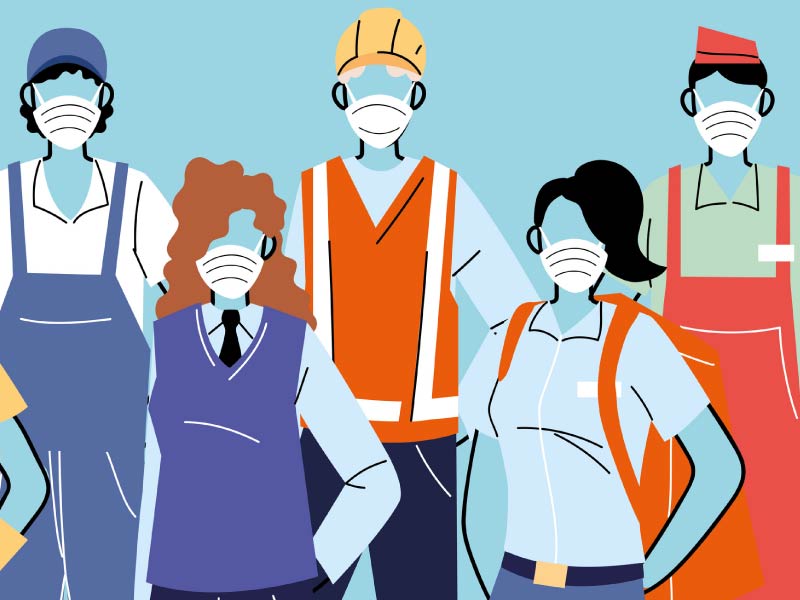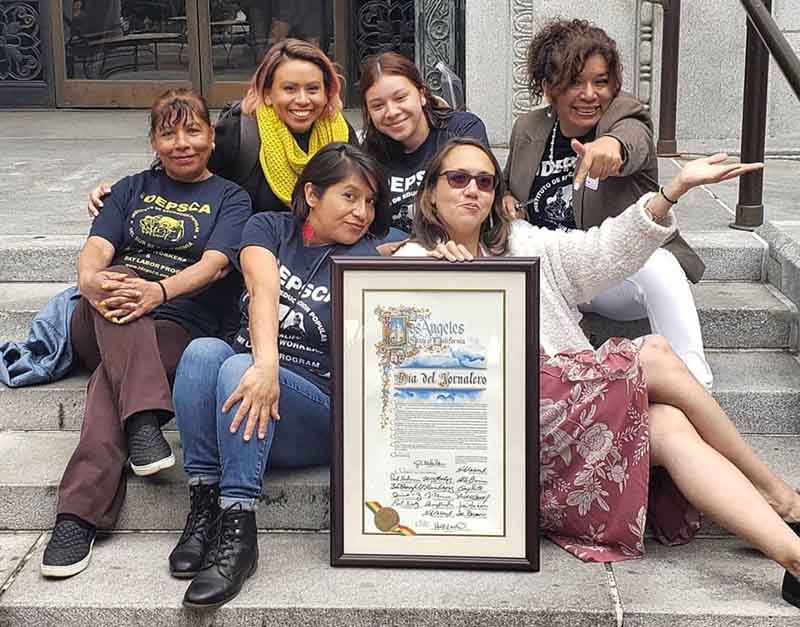Hispanics are paying the price for being 'essential' during the pandemic
By Maria Elena Fernandez, American Heart Association News

Since the coronavirus pandemic began, Maria de Lourdes Alvarado has had to pick up extra or overtime shifts whenever she can, like millions of other essential workers outside of the health care field who are helping to maintain a sense of normalcy in their communities.
And also like them, Alvarado is bearing the economic and medical brunt of the havoc COVID-19 is wreaking across the country.
The Los Angeles nonprofit where she works as an administrator, the Instituto de Educación Popular del Sur de California, provides the Hispanic community with relief from economic, personal and medical fallout from the pandemic. At a funeral home, where she is a weekend supervisor, she has witnessed firsthand the tragic toll on families like hers.
Her husband, an automobile detailer, lost his job in March and remains unemployed. Their 23-year-old son recently graduated from Northern Arizona University and is struggling to find employment as well. Her 16-year-old son is home completing his high school education online.
"The main reason I work so hard is because I've become the main provider for my family and I avoid getting into a lot of debt because my main goal is send my kids to college," Alvarado said.
"But I also love my community. Working with day laborers and household workers has really opened my eyes to see how the Latino community is often left behind. It's hard to understand how people like me have diabetes, high cholesterol or high blood pressure. We don't know it because we don't go as often as we should to see a doctor," she said. "If COVID-19 is affecting the Latino community more, it's because a lot of people in this community are not aware of their own health situation because they don't have the money to tend to it."
Hispanics, who currently make up about 18% of the U.S. population, are disproportionally getting sick and dying compared to non-Latino white people, as the pandemic continues to highlight societal inequities that leave historically marginalized communities more at risk to be exposed to the virus.
A recent study found that Latinos 65 years and older were two times more likely to die from the coronavirus than white non-Latinos of the same age group. The research, drawing on data from the Centers for Disease Control and Prevention, the U.S. Bureau of Labor Statistics, academic literature and news sources, also reported that Black adults 65 and older had about three times the death rate from the virus compared to white people in the same age group.
The Hispanic community, some of which has been hit hard by lack of access to healthy food and health care, already is at high risk for uncontrolled high blood pressure, obesity, diabetes and coronary artery disease. These underlying conditions put them more at risk of developing severe cases of COVID-19. By the end of September, Hispanics made up 29% of nearly 2.7 million cases tracked by the CDC, and 16.6% of over 121,000 deaths in which they could determine race and ethnicity.
The economic picture is just as grim. According to a Pew Research Center study, 6 out of 10 Hispanics – or 59% of those surveyed in May – live in households that have experienced job losses or cuts in wages. This means other family members have to continue working, often in jobs where adequate personal protective equipment is not provided. That includes work as custodians, food processing line workers, supermarket clerks and food delivery drivers.

"Unfortunately, there is a high proportion of Hispanics or minorities that are essential workers and thus are right in the forefront of the pandemic," said Dr. Jorge Saucedo, chief cardiologist for the Medical College of Wisconsin in Milwaukee.
"These are not jobs one can do at home, and there is a lot of exposure in their work environments. At the peak of the pandemic, if you were a Latino in the U.S., you had about two and a half times more chances of dying from COVID than if you were an average white person. The spreading of the virus is also much faster in the Hispanic community."
Although Alvarado said she has been mindful of wearing her mask, following hygiene protocols, and physical distancing while around other people, she came down with COVID-19 in July. For 10 days, Alvarado, who has diabetes, had a high fever, muscle fatigue, headaches, and loss of sense of smell and taste. Then, after a few days of feeling like her health was improving, the fever returned.
"It was a roller coaster," she said. "One day you feel you are winning the battle and then everything comes down again, and you have a fever and no energy. I also experienced depression. I was super scared something was going to happen to me because of what I have seen at the funeral home."
Now that Alvarado has recovered and returned to work, she is more determined to help educate her community, especially those who only speak Spanish. Originally from Mexico, she has lived in Los Angeles since 1995.
"For the Spanish-speaking communities, there has been very little information," she said. "Latinos are people who like to be in close contact with loved ones and often numerous people live in the same apartment. They don't understand this."
If you have questions or comments about this story, please email [email protected].





